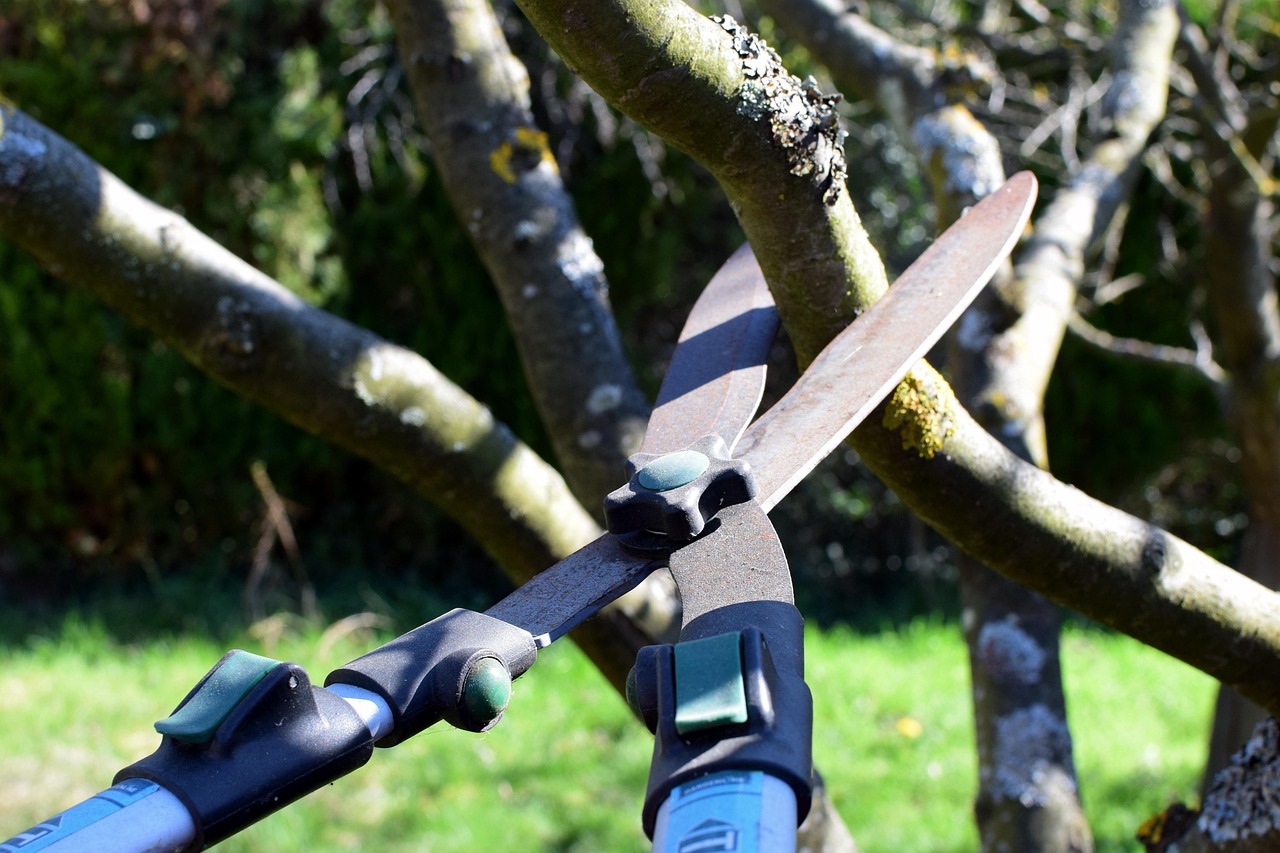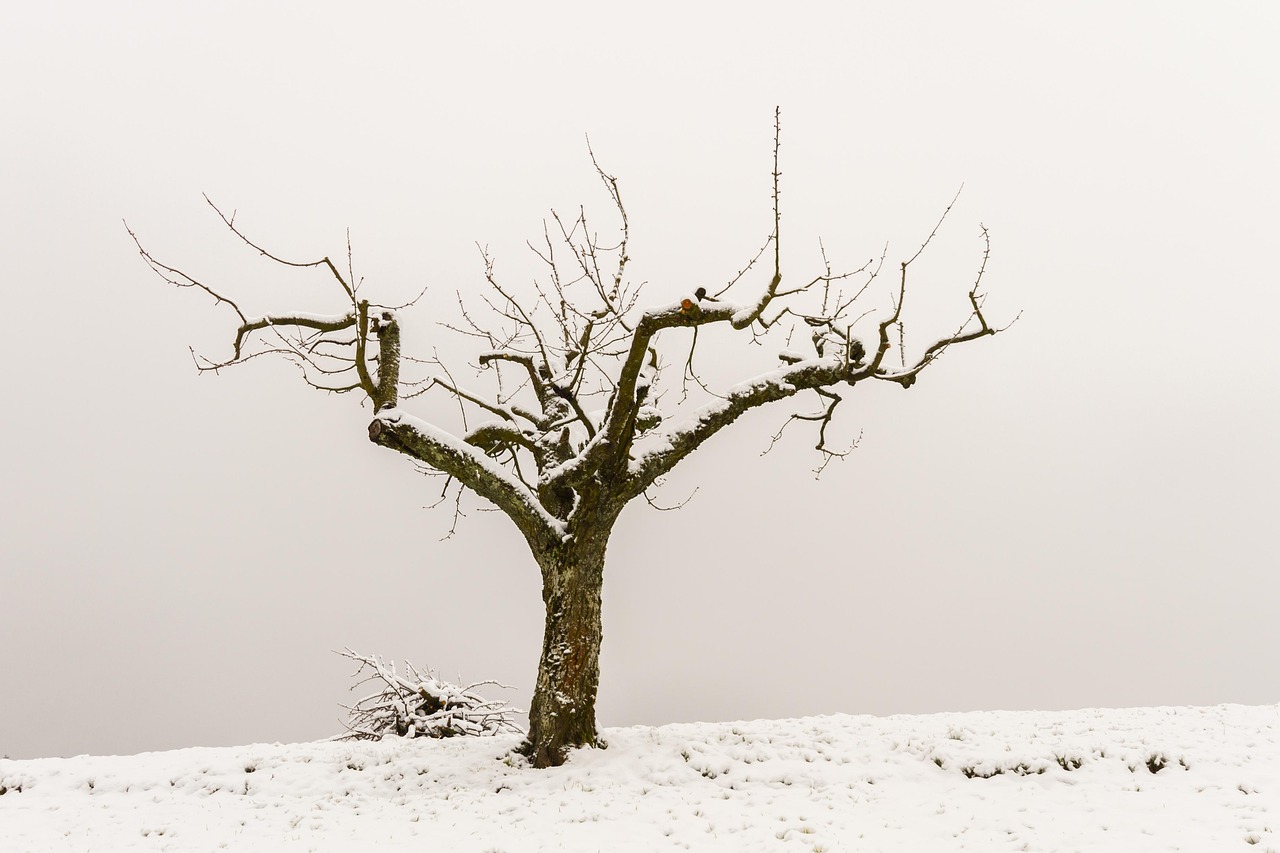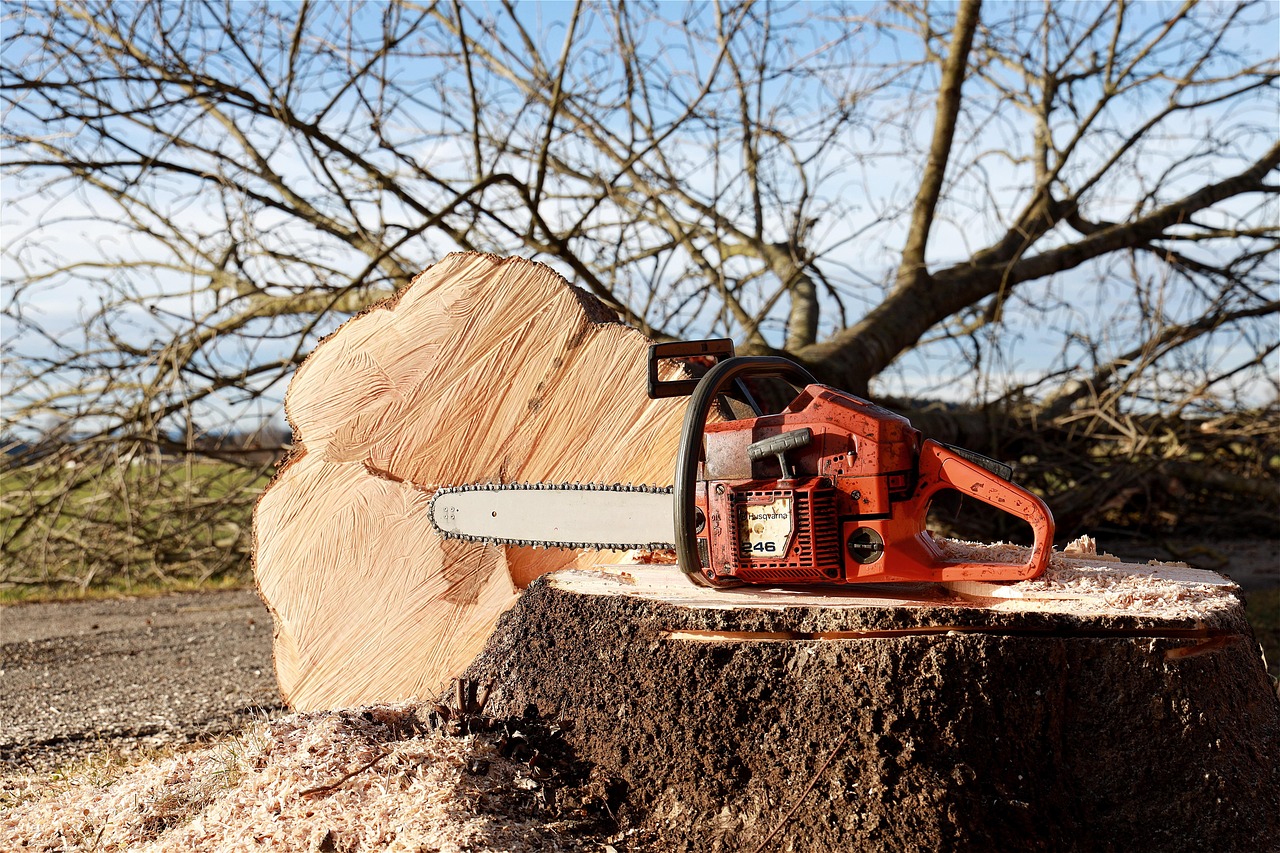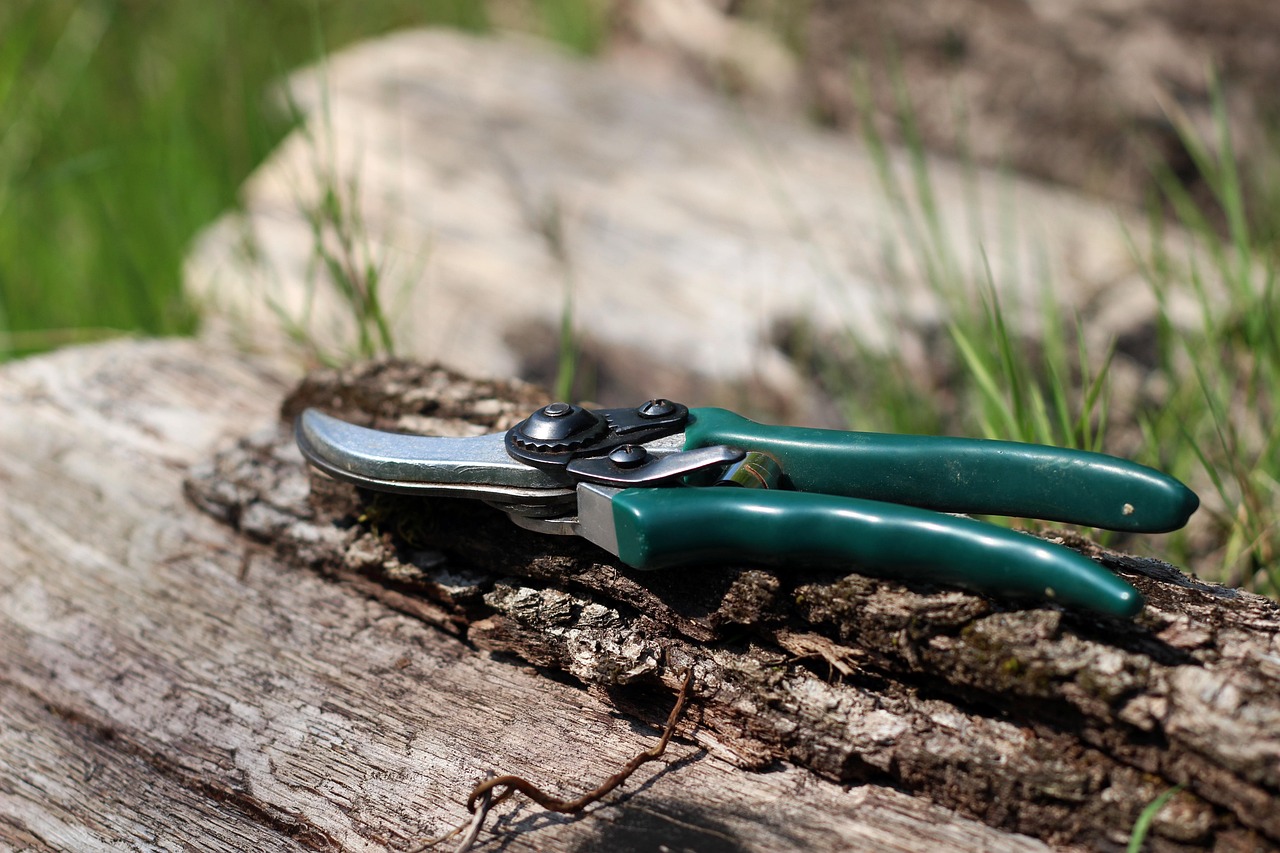Tree pruning after storm damage is essential for quick recovery. It involves removing broken branches and enhancing the tree’s structure. Proper pruning helps reduce the risk of diseases and promotes healthy growth, ensuring the tree can bounce back swiftly.
Storms can wreak havoc on trees, causing significant physical damage. High winds, heavy rain, and falling debris can lead to broken branches, uprooted trees, and compromised structures. For homeowners and property managers, addressing these issues promptly is vital to maintain the health of the trees and the safety of the surrounding environment.

Understanding the importance of tree pruning after storm damage is crucial. Pruning not only improves the aesthetics of the tree but also aids in its recovery process. When done correctly, pruning can help trees regain their strength and resilience against future storms.
Why Pruning is Important After a Storm
Pruning serves several important functions following storm damage. Here are some key reasons why it should be a priority:
- Health Restoration: Removing damaged branches prevents decay and reduces the risk of disease.
- Structural Integrity: Proper pruning enhances the tree’s shape and stability, making it less susceptible to future damage.
- Improved Airflow: Thinning out dense foliage allows for better air circulation, which is essential for tree health.
- Aesthetic Appeal: A well-pruned tree looks better and can increase property value.
- Safety Concerns: Eliminating hazardous branches reduces the risk of injury to people and property.
Pruning after a storm is not just about aesthetics; it is a critical step towards ensuring the long-term health and vitality of a tree. Neglecting this process can lead to further complications down the road.

Assessing Damage Before Pruning
Before starting the pruning process, it’s important to assess the extent of the storm damage. A thorough evaluation will help determine which branches need to be removed and if any other interventions are necessary. Here are a few steps to consider:
- Inspect the Tree: Look for broken or hanging branches, cracks in the trunk, and signs of disease.
- Check Surroundings: Ensure that there are no power lines or structures that could pose a risk during pruning.
- Evaluate Tree Species: Different species have varying resilience levels, which may affect your approach to pruning.
After assessing the damage, you can create a plan for effective pruning. This plan should prioritize safety and focus on promoting recovery.
When to Prune After Storm Damage
The timing of pruning can significantly impact the recovery process. Here are some guidelines on when to prune after storm damage:

| Time Frame | Activity | Notes |
|---|---|---|
| Immediately after the storm | Remove hazardous branches | Focus on safety and immediate threats. |
| Within a few weeks | Assess major structural issues | This helps in planning for long-term recovery. |
| Late winter or early spring | Complete major pruning | This is typically the best time for most species. |
By adhering to these timelines, you enhance the tree’s chances for successful recovery. It also minimizes stress on the tree during critical growth periods.
Techniques for Effective Pruning
Using proper techniques during pruning is essential for promoting healthy regrowth. Here are some effective methods to consider:
- Thinning Cuts: Remove entire branches back to their source to improve airflow and light penetration.
- Crown Reduction: Reduce the height of the tree while maintaining its natural shape.
- Heading Cuts: Shorten branches to encourage new growth, but use sparingly to avoid stressing the tree.
Choosing the right technique depends on the extent of damage and the type of tree. Each method has its unique benefits and challenges.

In summary, effective tree pruning after storm damage requires careful assessment, timely action, and proper techniques. By following these guidelines, you can help ensure that your trees recover swiftly and remain healthy for years to come.
Tools Needed for Pruning
Having the right tools is essential for effective tree pruning. Using proper equipment not only ensures the safety of the person doing the pruning but also minimizes harm to the tree. Here are some commonly used tools and their specific purposes:
- Hand Pruners: Ideal for small branches up to ¾ inch thick. They provide precise cuts and are easy to handle.
- Loppers: Useful for branches between ¾ inch and 2 inches thick. They have long handles for increased leverage.
- Saws: For larger branches, a pruning saw or a chainsaw may be necessary. They can handle branches thicker than 2 inches.
- Rope or Ladder: Necessary for reaching higher branches safely. Always ensure that ladders are stable.
- Safety Gear: Protective gloves, goggles, and helmets should be worn to prevent injuries.
Before starting any pruning work, check that all tools are sharp and in good condition. Dull tools can cause tearing and damage to the tree.
Safety Precautions During Pruning
Safety should always be the top priority when pruning trees, especially after storm damage. Here are essential safety precautions to follow:
- Work with a Partner: Pruning can be dangerous, especially when using saws or working at heights. Having someone nearby can help in case of emergencies.
- Wear Protective Equipment: Ensure you have gloves, goggles, and a hard hat to protect yourself from falling branches.
- Check for Power Lines: Always look out for overhead power lines before starting your work. If branches are near power lines, contact a professional.
- Use Proper Ladder Techniques: When using a ladder, maintain three points of contact, and ensure it is on stable ground.
- Be Cautious of Falling Debris: Stay aware of your surroundings and warn others nearby when cutting branches that may fall.
By adhering to these safety measures, you can help prevent accidents and ensure that the pruning process goes smoothly.
Signs Your Tree Needs Professional Help
While many homeowners can handle basic tree pruning, some situations require professional assistance. Here are signs that indicate it may be time to call an expert:
- Severe Damage: If the tree has extensive damage or is leaning dangerously, a professional arborist can assess its health and stability.
- Multiple Broken Branches: If there are many broken branches that need removal, an expert will have the experience to manage this safely.
- Pest Infestation: Signs of pests or disease can complicate pruning. An arborist can provide treatment options.
- Tree Size: Large trees often require specialized equipment and skills for safe pruning.
Recognizing when to seek professional help can save time and ensure the health of your trees in the long run.
The Role of Timing in Recovery
The timing of your pruning efforts after a storm is critical. Pruning at the right time can significantly affect how well and how quickly your tree recovers. Here are factors to consider regarding timing:
- Seasonal Considerations: Late winter or early spring is generally the best time for major pruning, as trees are still dormant and less stressed.
- Tree Species: Different species have unique growth patterns. Research the specific needs of your tree type for optimal results.
- Weather Conditions: Avoid pruning during wet weather, as it increases the risk of infection and disease spread in trees.
Understanding these factors can help you make informed decisions about when to prune for maximum recovery benefits.
Post-Pruning Care for Trees
After pruning, taking care of your tree is essential for ensuring a quick recovery. Here are some steps to follow:
- Watering: Ensure the tree receives adequate water, especially during dry spells. This helps stimulate new growth.
- Nutritional Support: Consider applying a balanced fertilizer to provide essential nutrients that may have been depleted during the storm.
- Pest Management: Keep an eye out for signs of pests or diseases following pruning, as stress can make trees vulnerable.
- Avoid Further Stress: Limit additional stress on the tree by avoiding heavy foot traffic around its base.
Caring for your tree post-pruning will enhance its ability to recover from storm damage and promote healthy growth moving forward.
The Importance of Monitoring Tree Health
Once you have completed the pruning and care process, monitoring your tree’s health remains crucial. Regular checks can help identify any issues before they escalate. Here are some tips for effective monitoring:
- Regular Inspections: Check for signs of new growth, leaf discoloration, or bark damage periodically.
- Pest Checks: Look for any insect activity or signs of disease that may require treatment.
- Consult an Arborist: Schedule annual check-ups with a professional arborist who can provide insights on the tree’s health.
By staying vigilant and proactive, you can ensure that your trees remain healthy and resilient long after the storm has passed.
Common Mistakes to Avoid When Pruning
When engaging in tree pruning after storm damage, avoiding common mistakes is crucial for the health and recovery of the tree. Here are some frequent errors that should be avoided:
- Over-Pruning: Removing too much foliage can stress the tree. It is essential to prune judiciously to promote recovery.
- Improper Cuts: Making jagged or improper cuts can lead to infection. Always use clean, sharp tools and make precise cuts.
- Ignoring Tree Species: Different species of trees have specific pruning requirements. Not considering these can lead to poor outcomes.
- Pruning at the Wrong Time: Timing is vital. Pruning during the wrong season can hinder growth and recovery.
- Neglecting Safety Measures: Failing to adhere to safety protocols can result in injuries. Always prioritize safety when pruning.
By being aware of these mistakes, you can ensure a more effective and safer pruning process.
Understanding Tree Biology and Growth Patterns
A basic understanding of tree biology is beneficial when pruning after storm damage. Knowing how trees grow and respond to pruning helps in making informed decisions. Trees consist of various parts, each playing a crucial role:
- Roots: Anchor the tree and absorb water and nutrients.
- Trunk: Provides structural support and transports nutrients and water between roots and leaves.
- Branches: Extend from the trunk and support leaves, flowers, and fruit.
- Leaves: Responsible for photosynthesis, converting sunlight into energy.
Trees grow in a pattern known as “apical dominance,” where the main central stem grows stronger than other branches. Understanding this growth pattern helps in deciding how to prune effectively to encourage balanced growth.
The Impact of Storm Damage on Tree Health
Storm damage can have lasting effects on tree health. Recognizing these impacts is essential for proper care and recovery. Here are some common effects of storm damage:
- Physical Damage: Broken branches and torn bark can expose trees to pests and diseases.
- Root Disturbance: Strong winds can uproot trees or damage root systems, affecting nutrient uptake.
- Increased Stress: Trees may experience stress due to sudden changes in their environment, leading to slower recovery.
- Pest Infestation: Damaged trees are more susceptible to pests, which can further compromise their health.
Understanding these impacts helps inform your approach to care and recovery after pruning.
Nutritional Needs of Trees Post-Pruning
Nutritional support is vital for a tree’s recovery after pruning. Trees require specific nutrients for healthy growth. Here are key nutrients to consider:
| Nutrient | Function | Sources |
|---|---|---|
| Nitrogen | Promotes leaf growth and overall vigor. | Organic fertilizers, compost, or manure. |
| Phosphorus | Aids in root development and flowering. | Bone meal, rock phosphate, or superphosphate. |
| Potassium | Enhances overall health and disease resistance. | Potasium sulfate or greensand. |
Applying a balanced fertilizer can help provide these nutrients. However, it is important to test the soil first to avoid over-fertilization, which can lead to further stress on the tree.
The Role of Mulching in Tree Recovery
Mulching around the base of trees is another effective way to support recovery after storm damage. Here are the key benefits of mulching:
- Moisture Retention: Mulch helps retain soil moisture, crucial for new growth during dry periods.
- Weed Suppression: A layer of mulch inhibits the growth of weeds that compete for nutrients and water.
- Temperature Regulation: Mulch acts as an insulator, keeping soil temperatures stable.
- Nutrient Addition: Organic mulch breaks down over time, adding nutrients back into the soil.
The application of mulch should be done carefully. It is best to avoid piling mulch against the trunk, as this can lead to bark decay and rodent infestations.
Pest Management Strategies After Storm Damage
Pests can become a significant issue for trees recovering from storm damage. Implementing effective pest management strategies is essential. Here are some strategies to consider:
- Regular Inspections: Check trees frequently for signs of pest activity or damage.
- Natural Predators: Encourage beneficial insects that prey on harmful pests, such as ladybugs.
- Pesticide Application: Use pesticides as a last resort and ensure they are applied according to label instructions.
- Cultural Practices: Maintain healthy soil conditions and avoid overwatering, as stressed trees attract pests.
A proactive approach to pest management will enhance your tree’s ability to recover from storm-related stressors.
Long-Term Strategies for Tree Health
Maintaining tree health after storm damage goes beyond immediate pruning and care. Implementing long-term strategies can ensure that your trees thrive for years to come. Here are some considerations for long-term care:
- Regular Maintenance Pruning: Schedule routine pruning to remove dead or damaged branches and maintain the shape of the tree, promoting healthy growth.
- Soil Health: Conduct soil tests every few years to check nutrient levels and pH. Amend the soil as necessary to support strong root development.
- Water Management: Develop a consistent watering schedule, especially during dry spells, but avoid overwatering, which can lead to root rot.
- Fertilization Plan: Create a fertilization schedule based on the tree species and its specific needs. This can help maintain optimal nutrient levels.
- Education and Awareness: Stay informed about common pests and diseases in your area, and understand how they may affect your trees.
By focusing on these long-term strategies, you can foster a healthier environment for your trees and minimize the risk of future damage.
Community Involvement and Resources
In addition to personal efforts, community involvement can play a significant role in tree health. Here are ways to engage with your community:
- Local Tree Programs: Participate in or support local tree planting and care programs. Many communities have organizations dedicated to urban forestry.
- Workshops and Training: Attend workshops on tree care offered by local universities or horticultural societies. These can provide valuable knowledge on best practices.
- Networking with Arborists: Build relationships with local arborists who can offer insights and services tailored to your community’s needs.
- Volunteer Opportunities: Get involved in volunteer days focused on tree care and recovery in public parks or community spaces.
Engaging with local resources not only benefits your trees but also strengthens community ties and promotes environmental stewardship.
The Role of Technology in Tree Care
Advancements in technology are also making it easier to manage tree health effectively. Here are some technologies that can assist in tree care:
- Drones: Drones can be used for aerial assessments of large areas to identify damaged trees quickly and efficiently.
- Apps for Tree Identification: Smartphone applications allow users to identify tree species, monitor growth, and track health metrics.
- Sensors: Soil moisture sensors can help determine when trees need watering, ensuring optimal hydration.
- Remote Monitoring Systems: These systems track environmental conditions, providing data that can help with decision-making regarding tree care.
Utilizing these technologies can enhance your ability to care for trees more effectively and responsively.
Conclusion
Tree pruning after storm damage is a multifaceted process that requires careful consideration, assessment, and ongoing care. By employing effective pruning techniques, ensuring proper post-pruning care, and monitoring tree health, you can facilitate a quick recovery for your trees. Understanding the impacts of storm damage, avoiding common mistakes, and implementing long-term strategies will contribute to healthier trees in your landscape.
Community involvement and the use of modern technology further enhance the ability to manage tree health effectively. Each effort contributes not only to the recovery of individual trees but also to the overall health of the environment. With diligence and care, you can ensure that your trees not only survive storm damage but thrive in the years to come.
